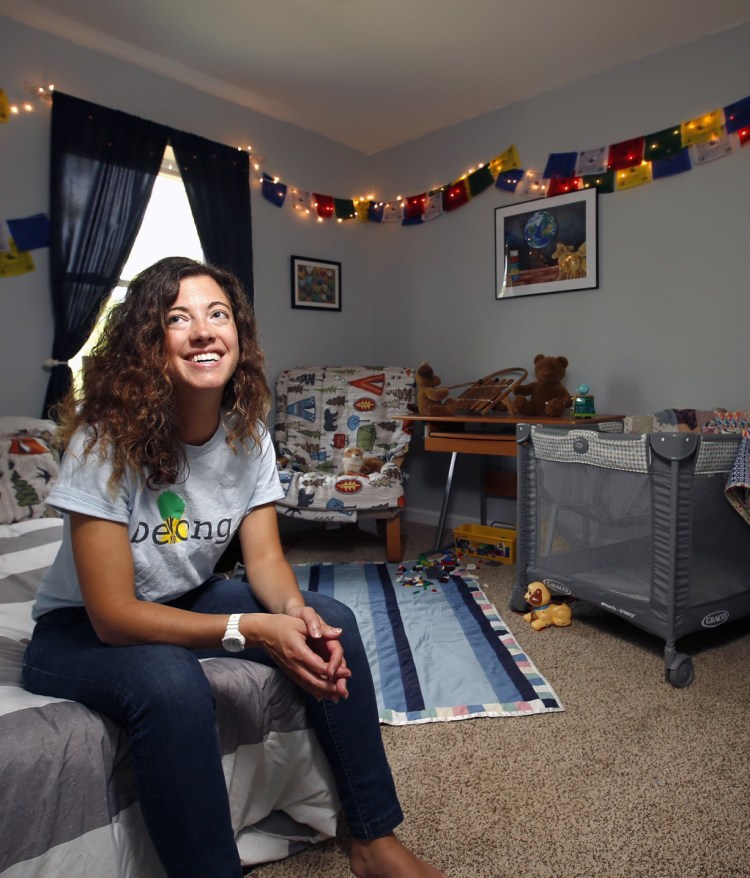FREEPORT — The front-page feature story on Sept. 2, “Fewer foster parents on the front lines,” shed light on the lack of stable homes for Maine children in foster care. As an interviewee, I appreciated how Staff Writer Eric Russell put pressure on decision-makers in Augusta and within the Maine Department of Health and Human Services, and educated future foster parents about potential worst-case scenarios.
However, I am nervous that the shortage of foster parents might have been unintentionally exacerbated by the story. Describing foster care by focusing on “the system” is as incomplete as describing having a baby by focusing on insurance and biomedical logistics. By leaving out the aspect of humanity, you’ve only scratched the surface.
STRENGTHS, OPPORTUNITIES OVERLOOKED
Appointments and paperwork are just administrative pieces of the experience of having a baby. Similarly, DHHS and “the system” are just one layer of fostering. They are an organic, evolving entity – hosting millions of extraordinary moments in homes across Maine, every day. As critical as it is to discuss gaps in services, it’s equally important to highlight the strengths and opportunities we readers can keep in mind as we vote, interact with our neighbors and plan our families.
Kids in foster care are opportunities in themselves. Outside of foster care, our first questions for kids are about what they want to be when they grow up. But inside foster care, our system focuses on a child’s past and present and not enough on their future. A key factor in changing outcomes for youth in care is achieved through changing personal expectations around what youth who have experienced trauma might be capable of. We control more of our neighbors’ futures with our opinions on what they can and can’t do than we give ourselves credit for. We need to raise the bar for foster care from “Does the child have a bed?” to “Is the foster family a good fit for this child in terms of interests and goals? Is the child engaged and on track to future success? Does the caseworker have the resources to make sure the answers to both questions is ‘yes’?”
Another opportunity lies in connecting community members with options to learn about the foster world without committing to full-time parenting. Foster parents are business owners, professors and micro-brewers. Many of them started as a volunteer or mentor. My oldest “foster friends” are accountants, recruited by employer KPMG to volunteer at Camp to Belong, a program that reunites siblings separated by foster care. Familiar with bureaucracy and calm under pressure, these analytic-minded professionals have gone on to raise funds and build long-standing relationships with countless youth for over a decade.
LET’S INVEST IN KIDS IN CARE
If more professionals were introduced to the awesomeness of kids in care, they’d be more likely to invest in who they are as people – as student athletes, your next employee, your future neighbor. In Portland’s shelters, there are multiple teens in DHHS custody. They might look and act like adults, but they are as vulnerable and vibrant as any other kid – needing respect, love and humor as they figure out who they want to be. What can we do to invest in them?
Increases in research and community programming are encouraging developments in the foster care movement, providing flexible ways for anyone to get involved or spread positivity. Some of my favorite organizations are One Simple Wish, the Maine Youth Transition Collaborative, Youth Leadership Advisory Team, Adoptive and Foster Families of Maine, Project Sparrow, Opportunity Alliance and Court Appointed Special Advocates.
Sharing positive stories on social media is an instant way to help reduce the stigma surrounding foster care – and it can trickle upward, making its way into the context of community planning across the country. For instance, in some regions where affordable housing is a hot topic, there are intergenerational housing developments that include foster families – the Treehouse Foundation in Massachusetts being a nearby example.
Yes, I want more foster homes in Maine – not just for the benefit of our kids, but also so that they can infuse more homes with joy, connection and the energy that comes with learning by doing. I want more caseworkers – not just for safety, but because they need time to address the overlooked needs, like helping a teen get her driver’s license. But most of all, I’d like Maine and our country to look at children in foster care with optimism. It’s time we make changes to foster care beyond the surface level by addressing what surrounds and lies beneath the shell.
Send questions/comments to the editors.



Success. Please wait for the page to reload. If the page does not reload within 5 seconds, please refresh the page.
Enter your email and password to access comments.
Hi, to comment on stories you must . This profile is in addition to your subscription and website login.
Already have a commenting profile? .
Invalid username/password.
Please check your email to confirm and complete your registration.
Only subscribers are eligible to post comments. Please subscribe or login first for digital access. Here’s why.
Use the form below to reset your password. When you've submitted your account email, we will send an email with a reset code.